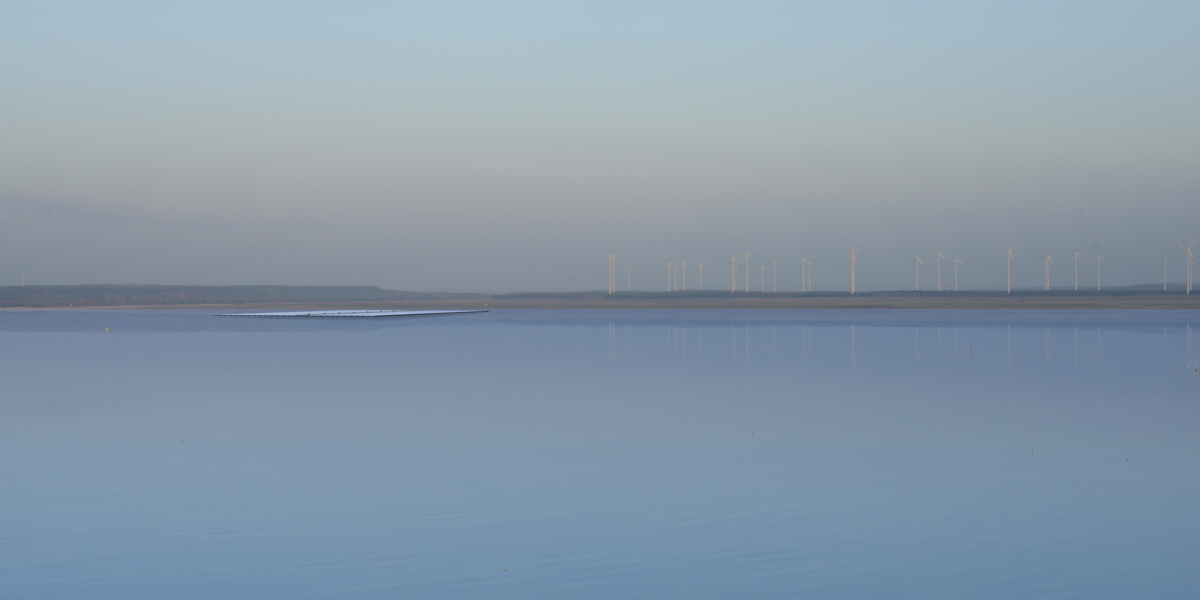On the way to the goal of a carbon free harbor district, the city of Cottbus yesterday approved the statute resolution for the 21 MWp floating PV plant on the lake Cottbuser Ostsee. This will enable LEAG and EP New Energies (EPNE) to submit the building application for Germany’s largest floating PV plant before the end of the year. The decision to adopt the bylaws was preceded by public participation and the relevant authorities, which started last summer. Once the building permit is available, installation of the anchring system could begin next spring.
“Although the floating solar plant is expected to occupy less than one percent of the lake surface on Cottbus’ 1,900-hectare Cottbuser Ostsee, the plant will make an important contribution to the climate-friendly power supply of Cottbus’ harbor district. I would like to thank the city of Cottbus for approving the project after an intensive review, and I see us as partners jointly on the right path to meeting the challenges of the energy supply of the future,” said Fabian von Oesen, Head of Renewable Energies at LEAG. “In addition to solar, wind and sea thermal energy at Cottbuser Ostsee provide us with further opportunities to bring renewable energy sources to bear and thus gradually strengthen the green powerhouse in Lusatia.”
The mayor of the city of Cottbus/Chóśebuz, Holger Kelch, welcomes the course set by the city councillors of Cottbus. “The city of Cottbus/Chóśebuz has set itself the goal of developing a carbon neutral port and city quarter to give new impetus to urban development. Floating PV is just the first step we are now taking together, with further projects such as wind turbines and a seawater heat pump to follow. Together with LEAG, we want to implement energy projects that take into account the criteria of innovation, sustainability and climate protection and are in line with the development goals of the mining lake in the areas of local recreation, tourism and nature conservation, and likewise ensure an important part for energy independence.”
“With floating PV, we have a technology with a lot of potential at our disposal that can be erected on artificial bodies of water, such as opencast mining lakes, with little conflict. As Germany’s largest floating PV plant and its innovative anchoring system, the planned plant on the Cottbuser Ostsee is a supra-regional lighthouse project. With this project, we are combining CO2-neutral energy generation with the protection of the ecosystem and the interests of the public. There are many other opencast lignite lakes in Lusatia that we would like to use for floating solar systems. In this way, we are making additional area potential available for the GigawattFactory and the energy turnaround,” affirms EPNE Managing Director, Dominique Guillou.
The size of the Cottbuser Ostsee makes it possible to plan the project area at the greatest possible distance from all lakeshores used for tourism and outside planned shipping routes. Due to the flat design of the floating PV plant, it will also be barely perceptible from the shores of the lake used for tourism. The planned annual generation of approx. 20,000 megawatt hours would be mathematically sufficient to supply 5,700 households with electricity.
Your contact for further information:
Margarita Schulz, EPNE, HR & Communications Manager
Telefon 030 767584572, margarita.schulz@epne.de
Thoralf Schirmer, LEAG, Pressesprecher, Büro Cottbus
Telefon 0355 2887 3067, thoralf.schirmer@leag.de
